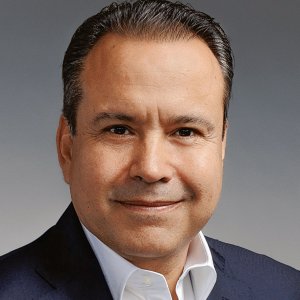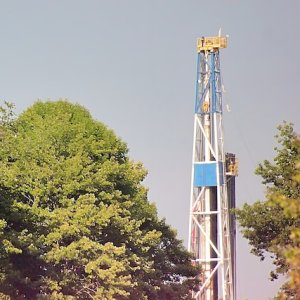
Wärtsilä's Flexible Power Symposium LATAM and Caribbean Day 1
 By Cas Biekmann | Journalist and Industry Analyst -
Wed, 10/20/2021 - 18:01
By Cas Biekmann | Journalist and Industry Analyst -
Wed, 10/20/2021 - 18:01
With the COP26 summit in Scotland around the corner, integrating renewable energy into the grid with the objective to ward off catastrophic climate change is what is currently dominating the discussion. Because existing grids were not initially constructed to handle the intermittency that comes with renewable energy, countries in Latin America tend to handle the issue differently. Wärtsilä’s Flexible Power Symposium Day 1 briefly outlined some of Latin America’s renewable energy frontrunners discusses which technologies can help and where we can find succesfull case studies.
The Delicate Act of Balancing High Renewable Systems
A global energy transition asks that many matters be settled. Therefore, incorporating a high amount of renewable energy in any grid, with an end goal of 100 percent renewable energy, is considered a key factor. Balancing such a system is a delicate act, which requires meticulous modeling, intelligent future planning and top flexible power technology.
“We are going through a global energy transition and are seeing a strong movement toward decarbonization and net zero goals,” said Anja Frada, Vice President of Strategy & Business Development at Wärtsilä’s Energy Business. Due to the affordability of renewable energy, the economics of the energy transition make sense. Wind and solar are now much cheaper than fossil fuel-fired plants, for instance. But for grids, traditionally based on inflexible fossil fuel-based power production, the switch to intermittent renewable energy proves challenging. For intermittent solar and wind energy to be a viable baseload, thermal energy and storage need to be applied intelligently and serve as a balance.
Wärtsilä’s PLEXOS power system optimization software has been successful in planning the future of power systems from a techno-economic perspective. “Through modeling we are able to show the benefits of the transition on the system-level,” added Frada. Brazil was a particular success case for PLEXOS. The country already has a strong amount of renewable energy generation. Wind and solar capacity is growing, but its hydroelectric power plants account for a whopping 65 to 75 percent of renewable energy generation. The good news is that hydropower is flexible, but developing more of it is not a possibility because it entails flooding the Amazon.
“The myth that hydro could complement wind and solar easily already existed. When we modeled this, the results were interesting,” said Cavados about Wärtsilä’s findings. In scenarios where much rain fell, this myth was confirmed and Brazil could comfortably dispatch 85 to 95 percent of renewable energy. This all changed during average or low rainfall. Dealing with this required significant flexible capacity because wind and solar resources are too intermittent to be a base load on their own. As a result, Brazil requires 12 to 13GW of flexible capacity.
Not all flexible capacity is created equal, though. Brazil should therefore look toward an optimal solution based on its specific situation. If Brazil sees a lot of rain, the system will barely require its flexible capacity. When it is dry, the system needs a lot of power and should power 50 to 60 percent of the dispatch. “Dry years happen quite often too,” said Cavados. During an average year, flexible capacity is to power 15-20 percent of the grid, but capacity should be able to start and stop rapidly and often. “Combined cycle power plants are ideal for carrying large amounts of the baseload to competitive costs, but feature a lot of CAPEX and deliver little to no value in dry years. For this reason, reciprocating engines are Brazil’s optimal solution,” said Cavados. Reciprocating engines can start and stop easily and function as a strong power source much like an open cycle gas power plant. When it is idle, it costs very little. Whereas this is the ideal solution for Brazil, other countries with a different grid make-up have different issues to deal with and questions to answer.
Road Mapping the Energy Transition
Sequence modeling suggests that despite nations having fundamentally different energy frameworks, they are bound to face similar challenges and follow a similar energy transition model towards net zero, says Silvia Zumarraga, Market Development Manager at Wärtsilä.
From the Path-to-100 study emerged an apparent three-stage process which initiates with a preparation phase, entailing an in-depth assessment of the country’s existing power system needed to identify capabilities and limitations essential to formulating the first regulatory steps. The information collected will also inform crucial downstream decisions about the national road map which should include rational decisions about what infrastructure will need to be developed and retired without compromising the flexibility of the grid. Since countries use a different composition of natural resources to generate energy this phase is where these nations diverge the most which is important and necessary.
Mexico which has a significantly high capacity for renewable energy generation should take heed from Germany’s experience and capacitate their energy grid to handle energy surges they can generate. Otherwise, the country can continue to expect disruptions such as the one they experienced last December when an “irregular connection” started a fire due to a system failure, consequence of high wind and solar energy generation and very low demand. Moreover, under the current administration the energy system has been reconfigured around its state enterprises which would be fine if their emphasis was renewable energy, but instead the country has taken a step back, to the extent as defaulting on their UN COP commitments. Nevertheless, they have made great progress in building cogeneration plants needed to keep energy generation stable until Mexico builds up its energy storage capabilities.
Hydrogen, Future Fuels: Chile Leading the Way in the Americas
Although renewable energy development is usually associated with more advanced economies, Chile has an ambitious plan of its own to tackle the energy transition. The country is set to lead the way in Latin America and compete at the global level, aiming to take full advantage of the “huge potential” it has, said Alejandro Mc Donough, Executive Managing Director of Wärtsilä in Chile.
Chile committed to reach 100 percent carbon neutral power system by 2050. The path to decarbonization sets high carbon emitting technologies to be retired by 2030, when the power system will be fully capable of serving the load without coal and diesel oil. By 2030, emissions will be cut by 80 percent, said Mc Donough.
The country’s ambitious plan is based on 4 pillars, explains the country's Ministry of Energy: retirement of coal-fired power plants and increasing renewables, energy efficiency, electromobility and green hydrogen, which presents diverse challenges itself. Already over 40 projects have began to materialize in Chile, with over US$15 billion projected investment by 2030. More than 15 projects have defined a starting date for operations.
Integrating Storage Systems: The Case of Roatan, Honduras
Battery Energy Storage Systems (BESS) continue to grow in popularity amidst a global push for renewable energy integration. This is no surprise because this technology has many benefits to offer. Leading company Wärtsilä outlines the advantages of BESS systems, with a particular focus on the system used to boost the isolated system of Roatan, an island in off the coast Honduras.
Wärtsilä is an industry leader in BESS system installation, with over 2GW of projects in operation, deployed or contracted, generating 2.5GW/h. The company’s systems are a boon to grid reliability, benefit renewable energy integration, enable microgrids and optimize the use of hybrid engines. The GEMS digital energy platform, a suite of proprietary software products that monitor and intelligently operate energy assets, provides the ideal basis for these solutions. “Software is at the heart of integration,” said Heller. GEMS furthermore features a high level of cybersecurity and talks to external systems, incorporating SCADA, forecasts and market data.
Matthew Harper, Director of Operations at Roatan Electric Company (RECO), highlighted how BESS helped the company provide electricity for its 18,000 citizens, all catered to by an isolated grid. RECO employed diesel engines at first but began operating liquefied petroleum gas (LPG) engines in 2017 in the form of a 28MW Wärtsilä power plant. It then began to look toward renewable energy with a 3.9MW wind farm and two photovoltaic solar power plants with 7.5MW of capacity. “We have to be responsible as human beings and want to contribute to a global lowering of emissions. But we also want to help our clients by reducing energy costs. The less fossil fuels we use, the better for our clients. The logistics of transporting fuels here are rather expensive,” he said, adding that “There is an added cost to living in paradise.”
Overall, this created a challenging situation for RECO. “Integrating diesel, LPG, PV solar and wind proved challenging,” said Harper. To tackle this challenge, the company aimed to install a BESS supported by GEMS, which began operating in February 2021. This system has been a success: “We have had some challenges but mostly we have seen the massive advantages,” he said. Through relying on storage, RECO no longer needs to run to physically start up diesel engines in case of trouble. Roatan furthermore uses 10 percent fewer fossil fuels. Wärtsilä also supports the company through a long-term service agreement, providing training for employees and operators.
















